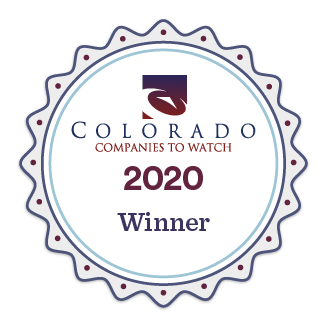Before jumping directly into design, one should consider the following: What problem will the project solve? Is there a defined need to be met? Is the device or system an alternative or improvement to an existing solution? The Definition phase is an exercise in critical evaluation of the concept and determination of critical features that will demonstrate its value to potential customers.
We also want to define which users may benefit the most from the finished device. User stories focus on the clients who will interact with this product and address how they will use the product, the features they will value, as well as the user experience from start to finish.
The project’s user stories will inform the product’s design objectives (which will ultimately become specifications). These should include definition of physical parameters, such as size, weight, and materials, the core and peripheral functionality, operational range, environmental conditions, and other critical states and modes of operation. These objectives will help determine development scope, production costs, opportunities for IP, necessary certifications, and other design restrictions.
By defining your concept in detail, one is forced to think through a product from several perspectives to accommodate all aspects of design. Well-defined specifications reduce the ambiguity of a design, so you can define your product in very clear terms to an external development team who can then more accurately scope your project development.
The preliminary user stories and specifications gained through the Definition phase will help influence a project’s Discovery phase. It’s in the Discovery phase where a project undergoes high-level engineering scrutiny and development of design strategy that will eventually lead to prototyping.
Validating specifications addresses any concerns about specification cohesion. Can conflicting specifications be resolved or will we need to pivot the product concept? It can also illuminate obvious development pathways. Are they feasible? If not, what are creative alternatives to consider and how may they influence future product development, costs, and schedules?
The Discovery phase may also identify any IP needs and potential restrictions, such as existing art that may interfere. Patent development plans may need to be discussed along the way to ensure IP provisions are appropriately secured.
Certification planning is a crucial element of the this phase. What certifications will the device require to operate within target markets, countries, and governing bodies? Certification costs and acquisition lead times will need to be factored into the development process scope and timeline, so that realistic milestone schedules can be projected. Certification requirements will dictate which resources are needed to achieve approval status, such as professional guidance, project testing, and appropriate documentation.
The Form and Function concepting of a project is a high-level engineering critique of the device. For mechanical projects, we’ll begin sourcing and evaluating samples and generating function-representative concepts that will ultimately undergo some industrial design to incorporate aesthetics. Electrical projects will include critical component identification and costing as well as block diagram and high-level schematic development to suss out any later design challenges. Projects with firmware components usually include an outline of software architecture, an anticipated flow diagram, and evaluation of existing tools or integration points to reduce development efforts. All of this will be whittled down into one or several possible design routes, which will be investigated for their anticipated design complexity and projected production costs. These will be evaluated against the design specifications to determine which approach most efficiently and elegantly achieve the development objectives.
The Discovery phase determines opportunities and techniques for integrating a client’s project needs with existing resources, whether it be its own internal team or another external service. This helps create a cohesive development strategy with strict adherence to specification parameters and projected production costs. This allows a well-defined statement of work (SOW) for development of the initial round(s) of prototyping to be scoped.
Prototyping builds on validated specifications and a well-documented development strategy. Throughout the process, design reviews (both internally and client-facing) will keep all parties apprised of design progress until the device transforms from a simple demonstration of concept to a refined, field-testable device with aesthetic appeal.
The first round of prototyping focuses on a proof-of-concept (POC) design that targets critical functionality. Each subsequent prototype revision iteratively improves upon this base. Every round of produced prototypes should be rigorously tested and evaluated for adherence to the design objectives. Testing should not only include in-house functional testing, but also adherence to environmental and pre-certification standards. Real-world user testing is also critical, as this is what allows one to establish which features are of focus and which can be omitted in the first product generation. This is what builds confidence in each included feature and our team will adjust development course as appropriate to meet such moving targets. The cycle of design (refining designs, accommodating additional functionality, and layering aesthetics), building, and testing should be systematically repeated until all necessary elements are represented.
Once the design produces a design that adheres to all project objectives and passes the defined field tests, this resulting polished prototype is now ready for Finalization. At this point, it can be confidently showcased and demonstrated to a variety of business critical audiences, from investors to crowdfunding to sales channels.
The polished, pre-production prototype designs and updated design objectives are the inputs to the Finalization phase. The project is designed for manufacture, including tooling, materials, and assembly cost optimization. Simultaneously, production vendors are sourced and engaged for production. The design then undergoes an engineer validation test (EVT) with a sample pre-production run to practice the manufacturing process and allow final testing of the produced samples. These beta-level prototypes should undergo extensive field and pre-certification testing to confirm confidence in the final designs. Once the final adjustments have been made, the EVT-approved/production equivalent devices are then passed through certifications and standards and the production-ready designs are sent to the manufacturer. If appropriate, test fixtures (devices used to verify expected operation of manufactured devices) may be simultaneously developed or provisioned for.
The Production phase moves your design into manufacturing. Our team can help oversee manufacturing, provide quality control and support, and critically inspect available samples. We are intentionally a nimble team that can quickly supply updates to manufacturers as needed based on our critical evaluation through Production. The end result is a device or system proven and tested for optimal user engagement. Congratulations, your design is now ready for market!
© 2024. Boulder Engineering Studio.
All rights reserved.





